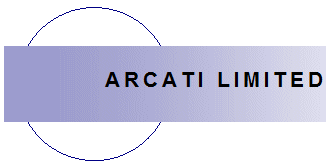 |
 |
 |
||
Search engine rankings
Whether a site appears on the first page of a search depends on its ranking. On the Technology Web page, Google tells us that: "PageRank reflects our view of the importance of web pages by considering more than 500 million variables and 2 billion terms".
First of all, how do search engines know what pages you have on your Web site? The answer is they use spiders or bots, which are automated computer programs that access Web pages and record the links they find. These links are then added to a list of sites to be crawled by the bots in the future. Google's programs are called Googlebots!
But perhaps more importantly, how does Google (or any other search engine) know about your Web site in the first place? The answer to that is that it either found a link on a site that it crawled earlier, or the Webmaster submitted the site to Google to be added to the list. For Google the URL you need is www.google.com/addurl. For Yahoo, it's search.yahoo.com/info/submit.html. And for MSN, it's search.msn.com/docs/submit.aspx.
Once a Googlebot has crawled your site, the Web pages are downloaded and analysed. The words and phrases that they contain are stored in the index. The index will also note the title, which it uses when displaying a short preview on the search page. The indexing process is fairly sophisticated and gets information from the HTML, images, and even Flash files.
Each search engine uses a different algorithm to calculate the ranking of a page, but there are techniques that can help increase a Web page's ranking. One quite important one is the number of other Web pages that link to that page. The more inbound links that exist, the higher the ranking. The problem with that is links to your site are outside your control to a large extent, but lots of internal links help.
The best technique is the use of tags in the head section of a page. Step one is to give a page a meaningful name (meaningful in terms of the Web page's contents. "New page" is useless. The next step is to get the meta tags right. For example:
<meta name="description" content="This page ..." />
And include words that then re-appear on the page. It's also a good idea to include as many words as possible. Google doesn't use the keyword meta tag.
When it comes to laying out the contents of a Web page. It is usually recommended that h1 and h2 tags, or bold text are used to make sub-headings obvious to the search engines.
Google also likes to use the ALT tag on images to help build up a picture of a Web page, so include it. It can also help if you are using graphics to navigate (ie an image of a button). If that is the case (you are using graphics for buttons), then it's recommended that alternative navigation is also provided. This usually means hyperlinked text at the bottom of the page.
A site map can help search engines know which pages of your site can be searched and to find data. http://www.xml-sitemaps.com/ will help you build an XML site map that can be submitted to Google, or a text site map for submission to Yahoo. A sitemap also creates more site links - which increases the ranking.
And what should you avoid? Don't use frames - which means throwing away that old copy of Frontpage you thought you could use to build your Web site. Also, don't build the site using Flash because not all search engines can derive any information from Flash files. Also avoid writing about a topic on a page that's different from the title and meta tags.
And finally, update the content regularly so it looks fresh and interesting, and people will want to revisit.
If you need help with Web design and development, contact Trevor Eddolls at iTech-Ed.
iTech-Ed's telephone number and street address are shown here.

